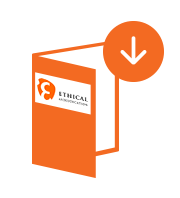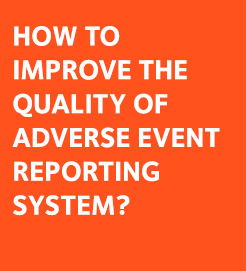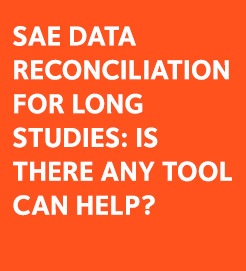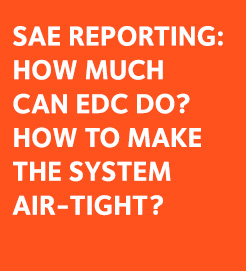In spite of checks, verifications and extreme care given to the SAE reporting process by pharmacovigilance and safety teams; errors, omissions or misinterpretations can still occur and the capability of any individual system will not eliminate them completely. The redundant nature of SAE reporting in two different databases following parallel, yet dissimilar methodologies, offers an ideal opportunity to improve the quality of SAE reporting provided there is a good method for comparing and mutually enriching these two sets of safety data. This methodology, known as the SAE data reconciliation process, is nevertheless a complex operation involving several departments. If not run efficiently, this process can cause delays and overhead work. With the use of the appropriate software tools, however, SAE data reconciliation can be an important factor of improvement of SAE reporting for both clinical and safety data sets.
Ensuring patients' safety is an important concern of clinical research and the main focus of Good Clinical Practices regulation (GCP). Clinical trials constitute the first encounter between patients and new drugs and the prompt timing of safety observations collection and reporting is paramount for the establishment of the safety profile and the benefit/risk ratio of Investigational Medicinal Products (IMP) or new Medical Devices (MD). Early detection of new safety observations in clinical trials relies heavily on the efficient collection, classification, coding and reporting of Adverse Events (AE) and, most importantly, Serious Adverse Events (SAE). This process is referred to as SAE reporting.
It is of interest that AE and SAE information is often captured using two distinct data capture tools, the Case Report Form (CRF) and the SAE Form, and is recorded in two independent repositories, the clinical database and the pharmacovigilance or safety database. In the clinical process, SAE data is managed together with all other safety information for the purpose of a holistic safety evaluation of the new drug or device. In the pharmacovigilance SAE reporting process, SAE data is primarily prepared for reporting SUSARs (Suspected Unexpected Serious Adverse Drug Reactions) to Health Authorities. Therefore sponsor companies use a variety of computerized clinical and pharmacovigilance data management systems selected on the basis of those different needs.
As one would expect, given the extreme care given to data processing in clinical research as a whole, each of the two SAE reporting paths is built around robust processes and incorporates multiple checks. Nevertheless, the complexity of clinical trials still leaves room for improvement. Errors, omissions and misinterpretations are frequently encountered in spite of all the “bells and whistles” built in the two SAE reporting methods. This is where SAE data reconciliation, the process of comparing the two databases and optimizing the accuracy of the data, comes into play and allows an improvement beyond the intrinsic capabilities of either individual SAE reporting process.
SAE data reconciliation is in itself a complex process that brings together several departments such as Data Management, Medical, Safety and Clinical Operations. Coordinating different departments is not a trivial task and governance must be well defined and followed in order to obtain the expected result and harvest the benefits. Drug safety / pharmacovigilance usually drives the process together with data management since SAE reporting is dependent on potential corrections. Medical is called in when medical questions arise and operations handle the query resolution sub-process. Regular meetings have to be organized to review discrepancies and decide on the best actions to resolve them. In addition, SAE data reconciliation needs to be performed all along the conduct of a clinical study in order to avoid creating bottlenecks at the time of database lock. This necessity creates another set of challenges. Indeed, if reconciliation occurs in a continuous base, it has to account for different types of changes of the data recorded in the two databases that are due to updates and corrections. Finally, all actions and decisions need to be fully documented for future inspections and control.
Implementing a faultless SAE reporting is not an easy task. In the past decades, technology has been called to assist in all levels, from data capture to the classification, formatting and reporting of SAEs in the safety and pharmacovigilance area. In parallel, clinical data quality is also supported by powerful software for data collection and management. SAE data reconciliation brings an additional level of quality to the safety data and must also be supported by the right computer tool to remain efficient and cost effective. Only under these conditions SAE reporting can achieve maximum quality and reliability at a reasonable cost.
A software like Ethical’s eReconciliation® helps improve the quality of SAE reporting by supporting efficient management of the SAE data reconciliation process. Integrating easily with most clinical and safety databases, eReconciliation® offers efficient search tools to rapidly find discrepant values, integrated operational features that facilitate cross-functional collaboration and a GXP compliant Audit Trail to easily document all discrepancies resolutions.
DOWNLOAD NOW THE FREE SAE RECONCILIATION HANDBOOK
The Manual / Reference Book with all the topics related to the Safety Data Reconciliation Management.







